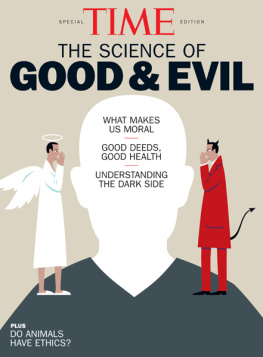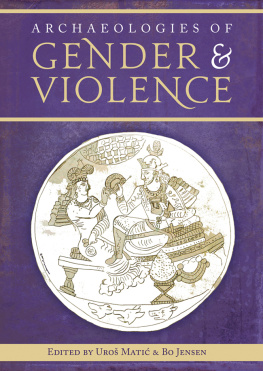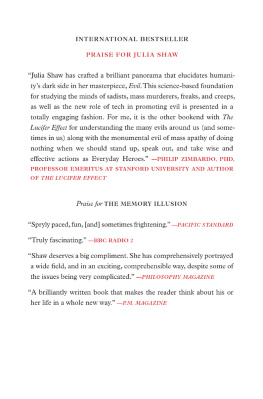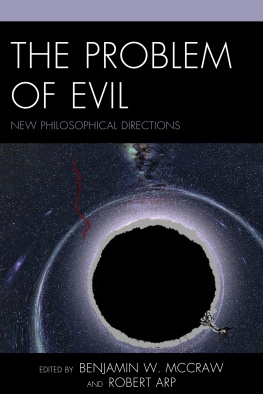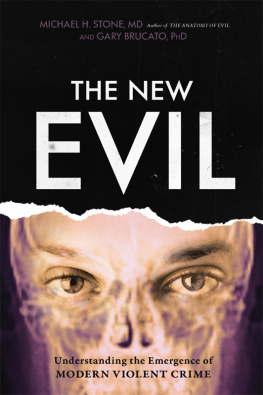
Gender and the Representation of Evil
This edited collection examines gendered representations of evil in history, the arts, and literature. Scholars often explore the relationships between gender, sex, and violence through theories of inequality, violence against women, and female victimization, but what happens when women are the perpetrators of violent or harmful behavior? How do we define evil? What makes evil men seem different from evil women? When women commit acts of violence or harmful behavior, how are they represented differently from men? How do perceptions of class, race, and age influence these representations? How have these representations changed over time, and why? What purposes have gendered representations of evil served in culture and history? What is the relationship between gender, punishment of evil behavior, and equality?
Lynne Fallwell teaches in the Educational Psychology and Leadership Program at Texas Tech University.
Keira V. Williams is an Assistant Professor in the Honors College at Texas Tech University.
Routledge Research in Gender and History
For a full list of titles in this series, please visit www.routledge.com
17Female Agency in the Urban Economy
Gender in European Towns, 16401830
Edited by Deborah Simonton and Anne Montenach
18Women and the Media
Feminism and Femininity in Britain, 1900 to the Present
Edited by Maggie Andrews and Sallie McNamara
19Gender in Urban Europe
Sites of Political Activity and Citizenship, 17501900
Edited by Krista Cowman, Nina Javette Koefoed and sa Karlsson Sjgren
20Women and the Reinvention of the Political
Feminism in Italy, 19681983
Maud Anne Bracke
21Women in Higher Education, 18501970
International Perspectives
Edited by E. Lisa Panayotidis and Paul Stortz
22Gendering the Settler State
White Women, Race, Liberalism and Empire in Rhodesia, 19501980
Kate Law
23Women in Magazines
Research, Representation, Production and Consumption
Edited by Rachel Ritchie, Sue Hawkins, Nicola Phillips and S. Jay Kleinberg
24New Perspectives on European Womens Legal History
Edited by Sara L. Kimble and Marion Rwekamp
25Gender and the Representation of Evil
Edited by Lynne Fallwell and Keira V. Williams
Gender and the Representation of Evil
Edited by Lynne Fallwell and
Keira V. Williams
First published 2017
by Routledge
711 Third Avenue, New York, NY 10017
and by Routledge
2 Park Square, Milton Park, Abingdon, Oxon OX14 4RN
Routledge is an imprint of the Taylor & Francis Group, an informa business
2017 Taylor & Francis
The right of the editors to be identified as the authors of the editorial material, and of the authors for their individual chapters, has been asserted in accordance with sections 77 and 78 of the Copyright, Designs and Patents Act 1988.
All rights reserved. No part of this book may be reprinted or reproduced or utilised in any form or by any electronic, mechanical, or other means, now known or hereafter invented, including photocopying and recording, or in any information storage or retrieval system, without permission in writing from the publishers.
Trademark notice: Product or corporate names may be trademarks or registered trademarks, and are used only for identification and explanation without intent to infringe.
Library of Congress Cataloging-in-Publication Data
Names: Fallwell, Lynne Anne, editor. | Williams, Keira V., 1976
editor.
Title: Gender and the representation of evil / edited by Lynne Fallwell
and Keira V. Williams.
Description: 1st Edition. | New York : Routledge, 2017. | Series:
Routledge research in gender and history ; 25 | Includes
bibliographical references and index.
Identifiers: LCCN 2016019405 (print) | LCCN 2016031674
(ebook) | ISBN 9781138692893 | ISBN 9781315531571 (ebk) |
ISBN 9781315531571
Subjects: LCSH: SexismHistory. | Gender identity. | Female
offenders. | Women murderers. | Good and evil.
Classification: LCC HQ1237 .G4276 2017 (print) | LCC HQ1237
(ebook) | DDC 305.309dc23
LC record available at https://lccn.loc.gov/2016019405
ISBN: 978-1-138-69289-3 (hbk)
ISBN: 978-1-315-53157-1 (ebk)
Typeset in Sabon
by Apex CoVantage, LLC
Contents
LYNNE FALLWELL AND KEIRA V. WILLIAMS
Section I
Narrative Foundations
PHIL ROBINSON-SELF
ANNA MCHUGH
ELIZABETH SCHREIBER-BYERS
Section II
True Crime
NICOLE ANAE
STEPHANIE BOYLE
LYNNE FALLWELL
HANNAH FRIEDMAN AND KAREN TAYLOR
Section III
Women, Evil, and the Arts
KRISTEN M. TURNER
LINDSAY THISTLE
TARA ATLURI
Lynne Fallwell and Keira V. Williams
Scholars often explore the relationships between gender, sex, and violence through theories of inequality, violence against women, and female victimization, but what happens when women are the perpetrators of violent or harmful behavior? In Gender and the Representation of Evil, ten contributors explore historical and cultural perceptions of women as evil. This volume seeks to explore the following questions: How do we define evil? What makes evil women seem different from evil men? When women commit acts of violence or harmful behavior, how are they represented differently from men? How do perceptions of class and race influence these representations? How have these representations changed over time, and why? What purposes have gendered representations of evil served in culture and history? What is the relationship between gender, punishment of evil behavior, and equality?
As concepts, gender and evil are surprisingly difficult for many people to define.1 This happens, in part, because gender and evil do not necessarily have finite definitions. Instead, each functions on a continuum which is itself shaped by prevailing cultural conditionsboth within and between societies. What is considered feminine or masculine shifts over time and place, as does what is perceived as acceptable (good) or unacceptable (bad). At the same time, such definitional adaptability means these concepts play important roles in a societys perception of itself and its surroundings.
Although they share definitional fluidity, gender and evil ultimately represent two different types of boundaries. Categorizations based on gender, like those based on race, class, nationality, sexual orientation, or even favorite sports team or eye color, are not in themselves indicators of good or bad attributes, but rather simply indicate difference. Where such classifications become problematic is when they are combined with value judgments by ranking one characteristic or attribute ahead of another, and then this ranking is used to justify exclusionary practices. One reason to keep them from joining us is the collective concern that they do not share our values. One way to keep them from joining us is by highlighting difference. It is not only that this perceived other is different, but also that difference is coded as wrong, bad, and in the extreme, evil.



